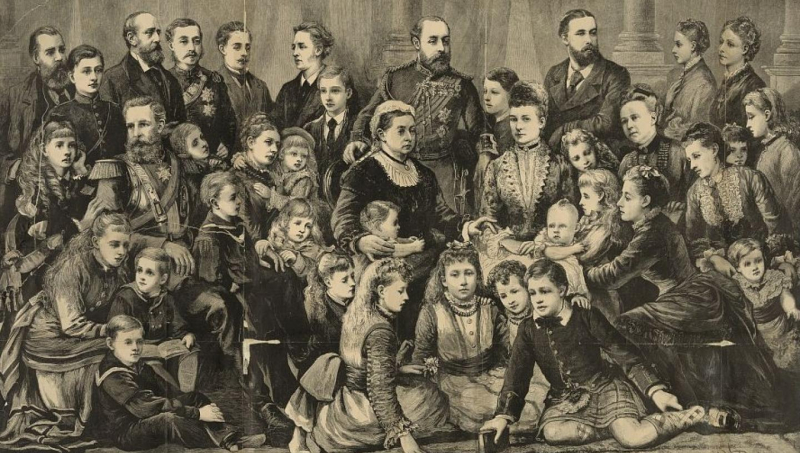Queen Victoria is known as the ‘Grandmother of Europe"
Queen Victoria is known as the "Grandmother of Europe" due to her connections to European royal dynasties.
Therefore, the fact that Queen Victoria is called "Europe's Grandmother" is considered one of the 8 Interesting Facts about Queen Victoria that many readers probably do not know.
In 1840, Victoria wed Prince Albert of Saxe-Coburg and Gotha, her first cousin, their offspring married into aristocratic and royal families throughout the continent, turning Victoria into the "Grandmother of Europe" and dispersing hemophilia among European nobility.
Nine children were born to Albert and Victoria throughout their 21-year marriage. To broaden and fortify Great Britain's ties to European kingdoms, certain children were married off into those monarchies. Eventually, 42 of Victoria's grandchildren became members of royal families in countries including Germany, Spain, Norway, Russia, Greece, Sweden, and Romania. In particular, 34 of the 42 grandchildren of Victoria and Albert lived to maturity. Elizabeth II, Harald V of Norway, Carl XVI Gustaf of Sweden, Margrethe II of Denmark, and Felipe VI of Spain are among their surviving descendants.
Victoria fell into a severe state of sadness following Albert's passing in 1861 and stayed away from the public eye. Her isolation led to a brief rise in British republicanism, but her popularity rose again in the second half of her reign. Her Diamond and Golden Jubilees were occasions for widespread celebration. In 1901, she passed away on the Isle of Wight. Her son Edward VII of the House of Saxe-Coburg and Gotha succeeded her as the final British ruler of the House of Hanover.
It is thought that World War I would have been averted if Queen Victoria had lived longer. This is because Victoria's three fighting royal descendants—Kaiser Wilhelm of Germany, Tsarina Alexandra of Russia, and George V of Britain—are all her grandchildren. If Victoria were still living, she would not have permitted her family to engage in hostilities.









